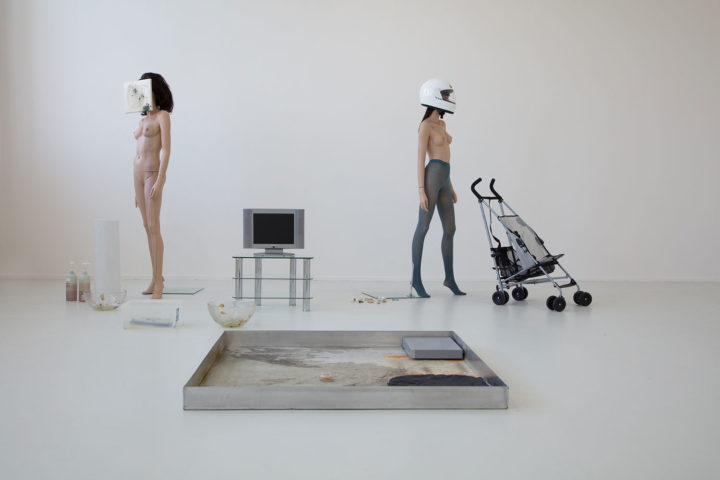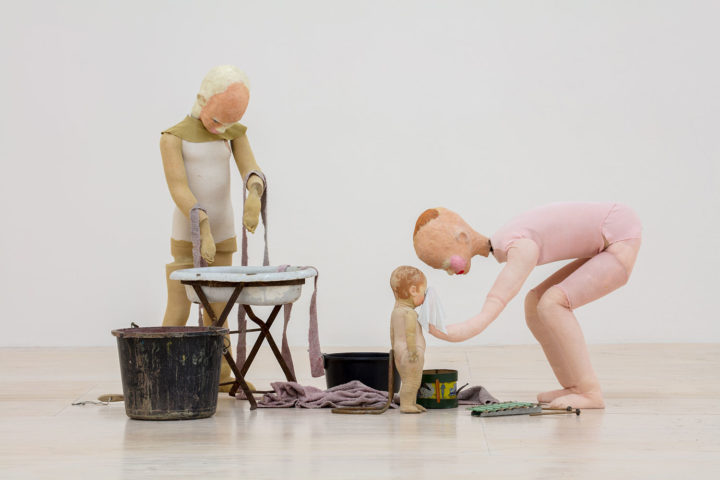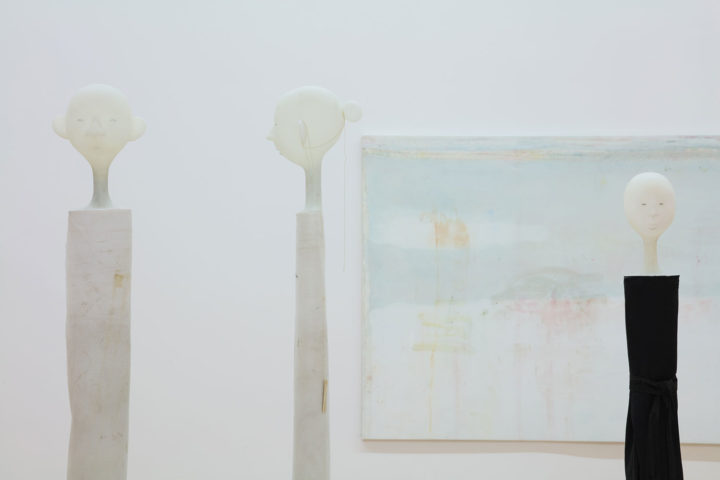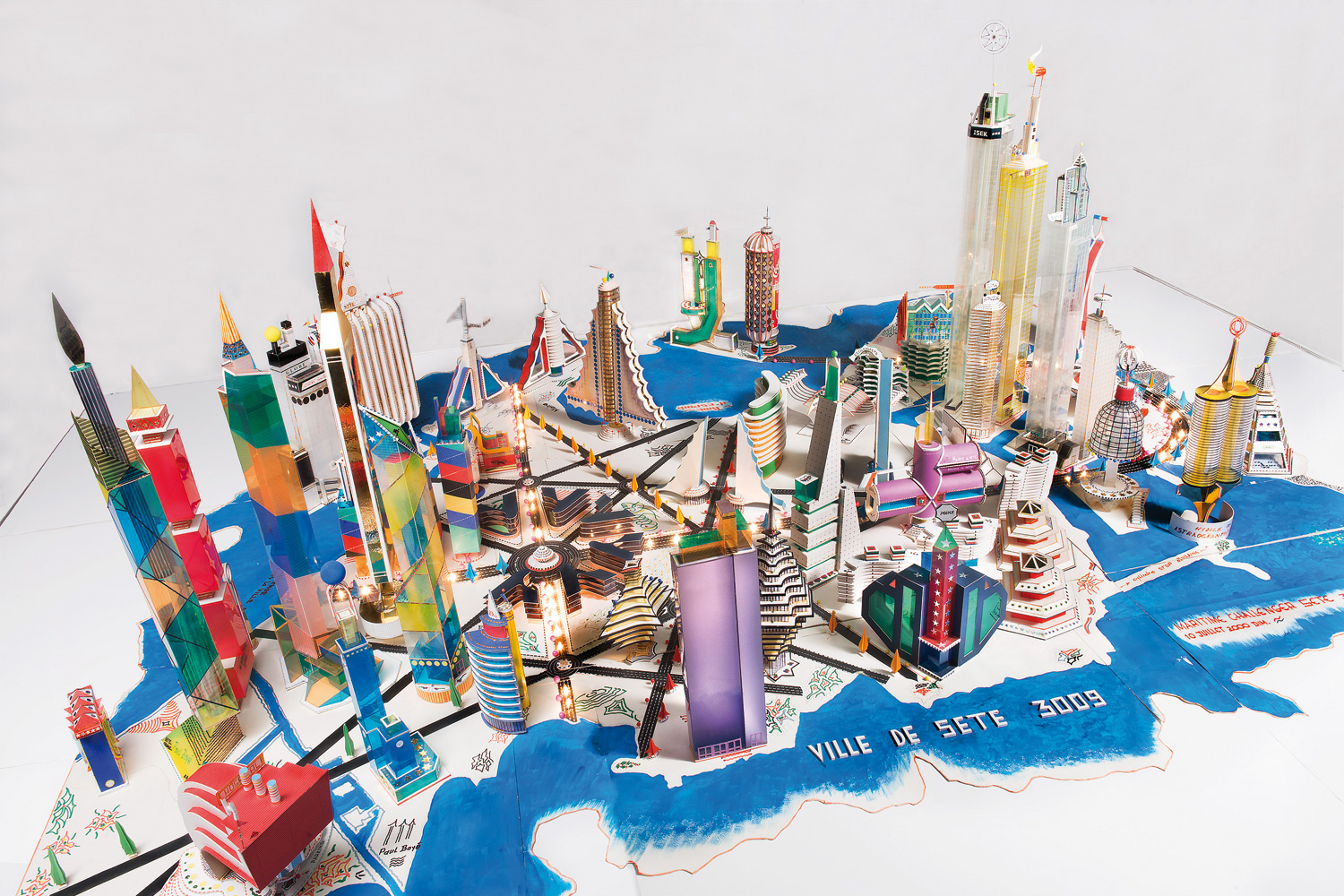This monographic exhibition of the work of Cathy Wilkes — the largest yet devoted to the artist — includes two small canvases washed over in gray, each bearing its title on its surface in an untidy, handwritten script: Teenage Mother and She’s Pregnant Again (both 2006).
A white saucer, stained with use and crudely painted, is affixed to each of the works. Among the exhibition’s installations, which organize sculpture and domestic objects in affective miscellanies, these twin texts — teenage mother, pregnant again — stage Wilkes’s work in conversation with reproductive labor and how it is valued. For which bodies are pregnancy and parenthood understood as happy and desirable? And for whom are they not?
Wilkes’s installations here are composed of elements of earlier installations, dated from 2004 through 2017. It’s a recirculation that makes linear chronology difficult, and leads the work outside the neat contours of exhibitionary histories. Among the assemblages are mismatched dinnerware, burnt branches, pieces of broken ceramic, mysterious garbage, glass bottles, worn wooden furniture, faded linens and drawings of various executions. Dead leaves, food and other brown matter lie at the bottom of bowls, jars, a coffee pot, a greenish glass aquarium. These are spread alongside autonomous paintings in a foggy palette of grays, yellows, pinks and greens.
What elements of the exhibition risk preciousness are well served by the sparseness of its installation, and the surprise of it: modern and unremarkable objects — a TV, a baby carrier, a cell phone — lend weight and anachronism to Wilkes’s arsenal. Reproductive labor is made to speak in matter — its intimacy with blood and decay, with money (or no money), and with the smoothly banal. Wilkes’s exhibition doesn’t so much inscribe femininity in domesticity or maternity as it does narrate a soft cinema of gender and detritus.






